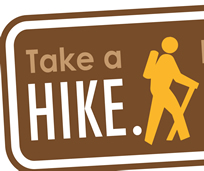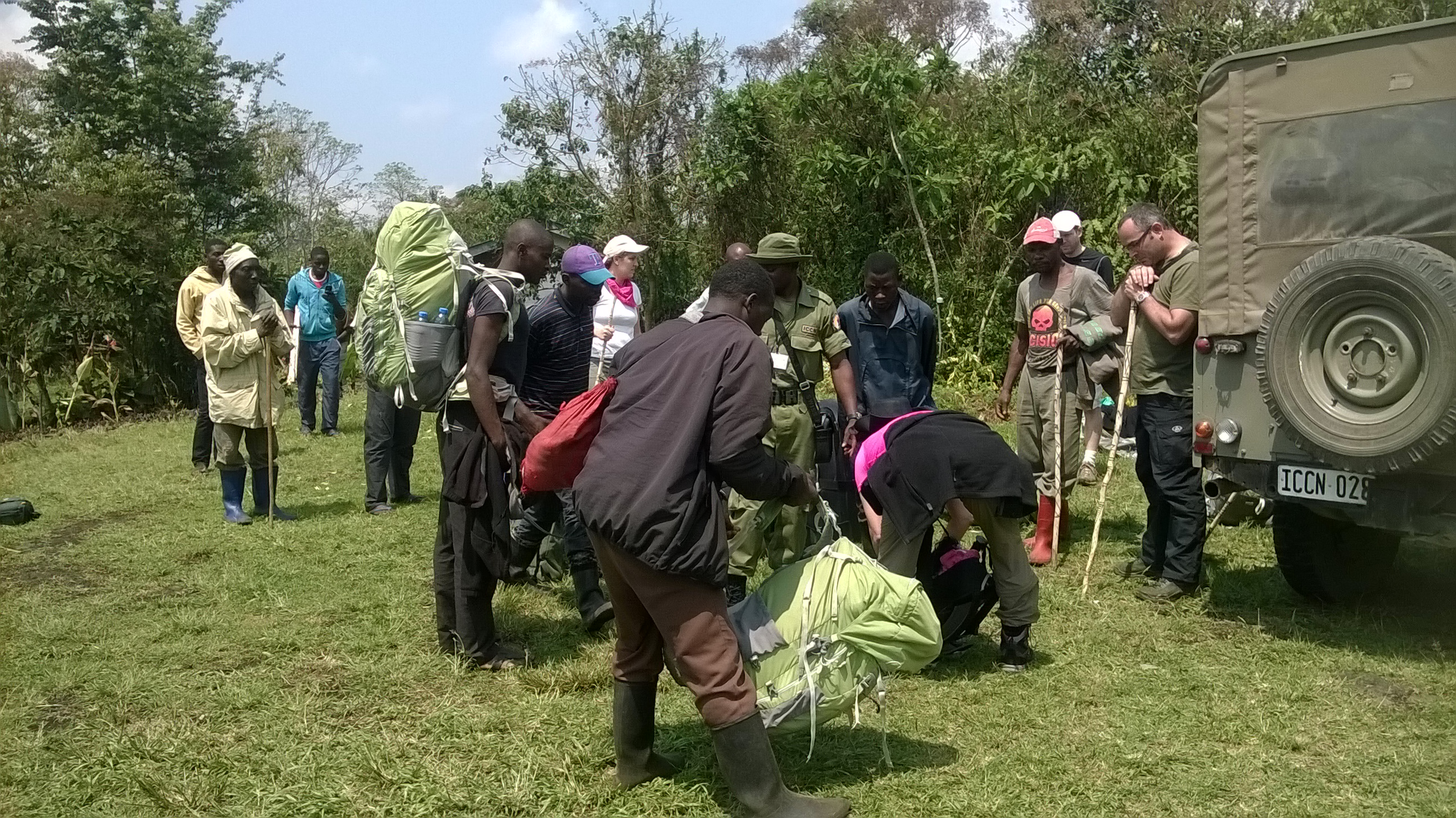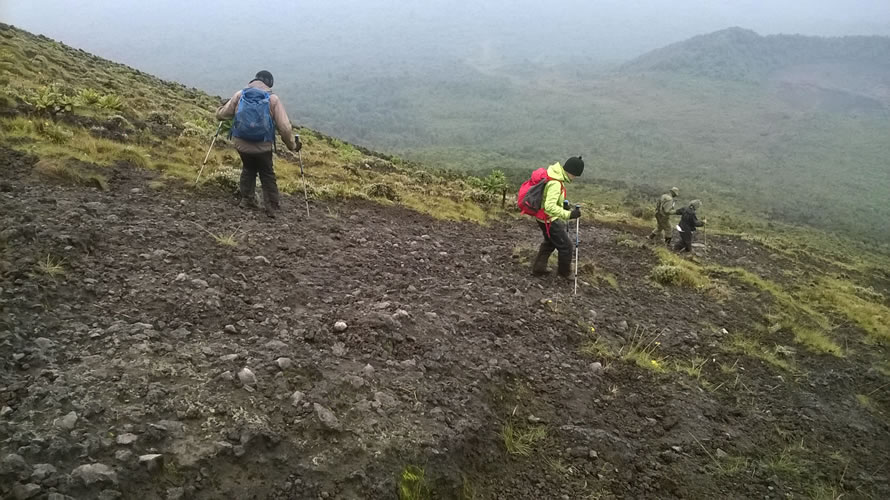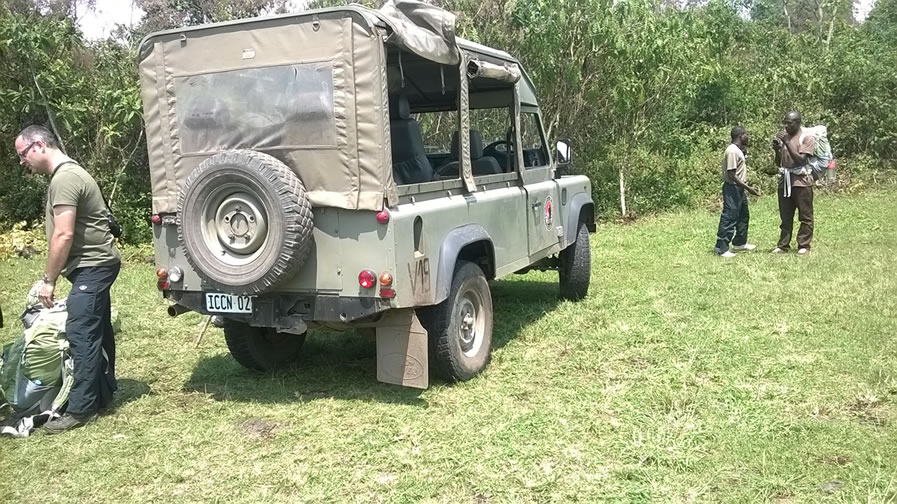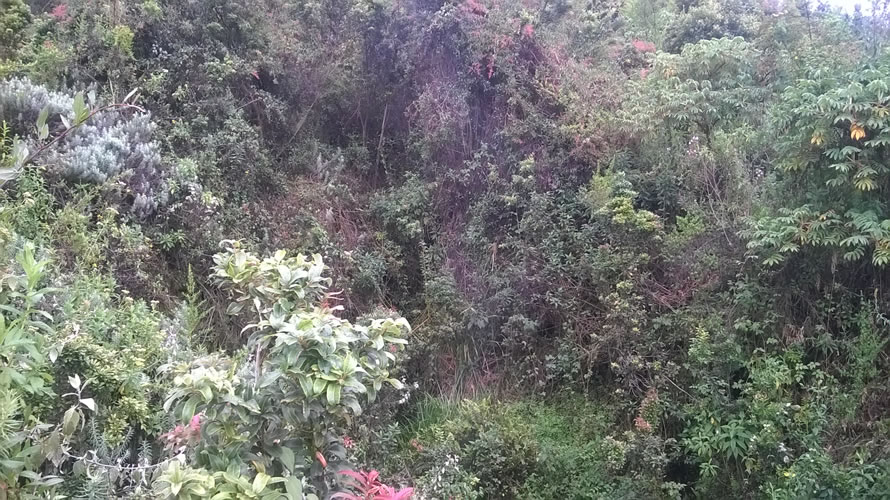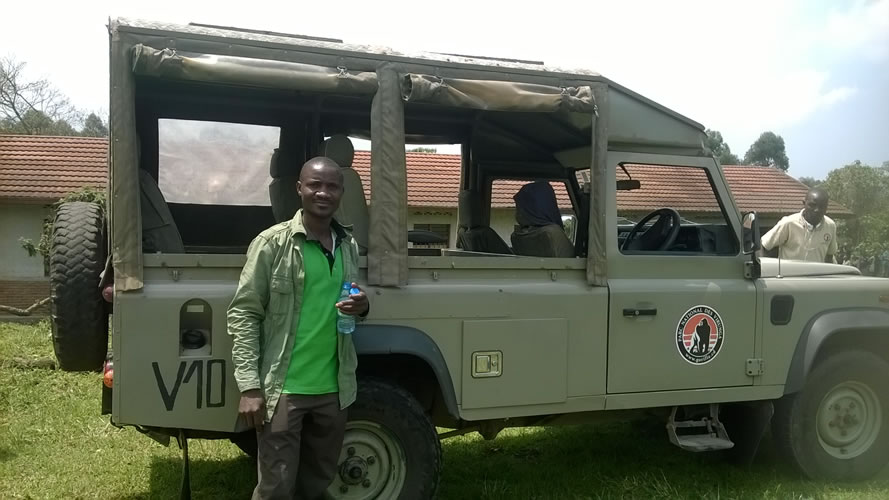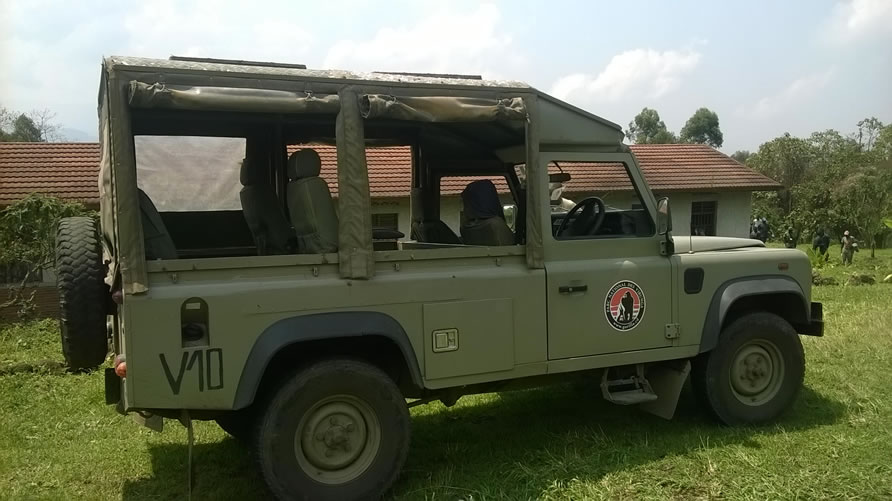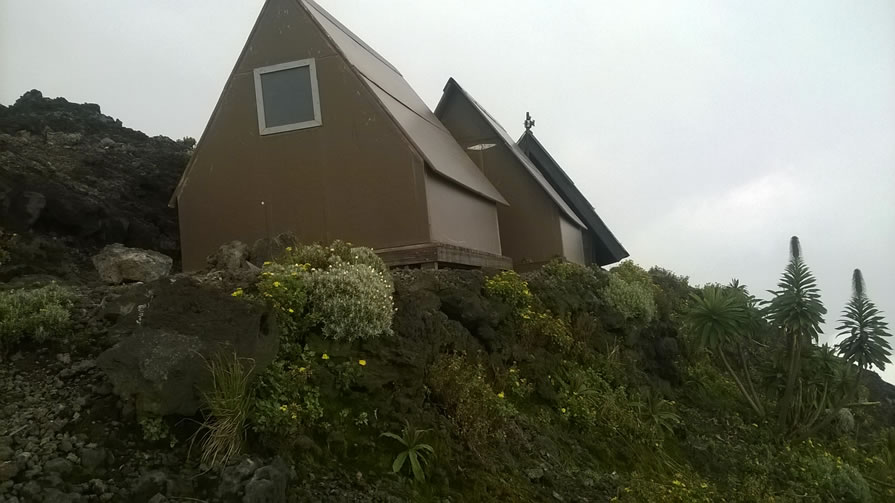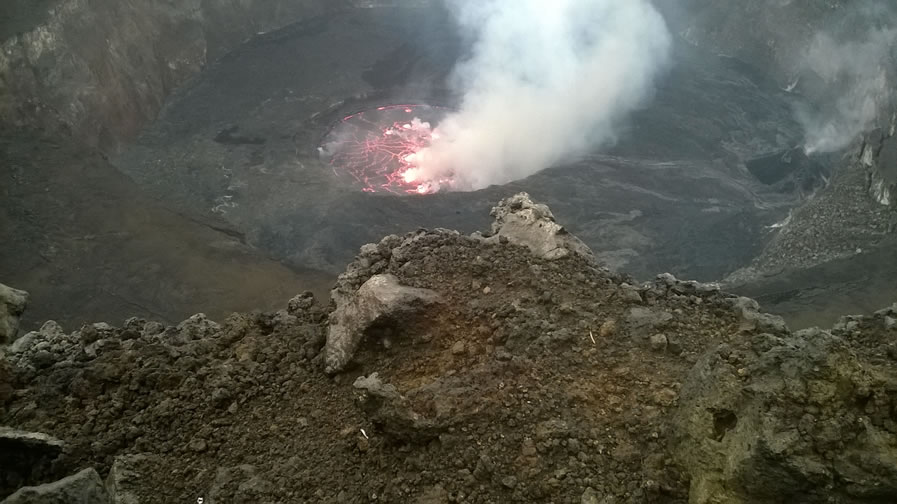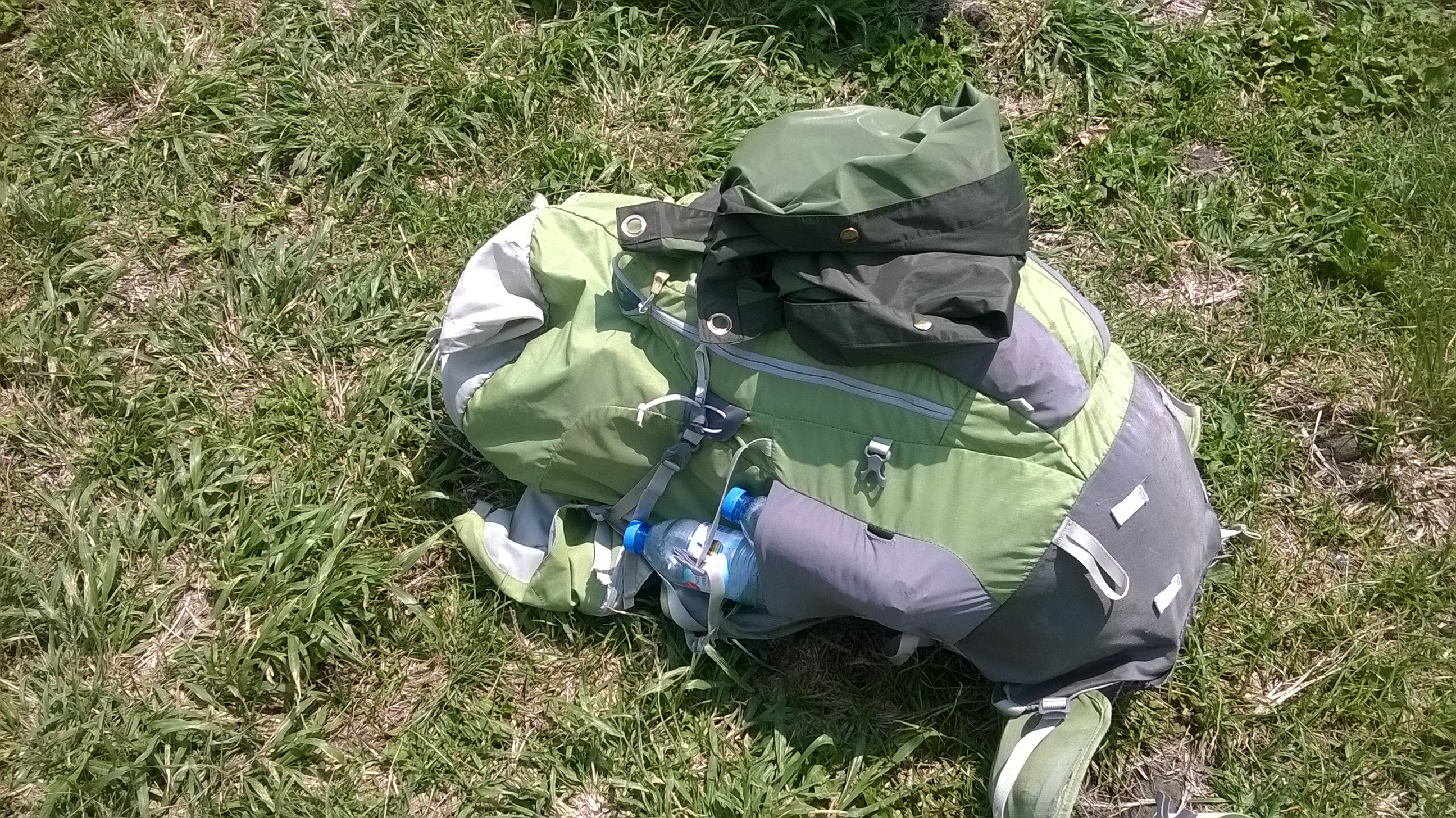Visit Nyiragongo – Hiking Mount Nyiragongo Volcano|Visit Virunga
Mount Nyiragongo is an active strato-volcano with an elevation of 3470 m (11382 ft) in the Virunga Mountains associated with the Albertine Rift. Located inside Virunga National Park, in the Democratic Republic of the Congo, about 20 km (12 mi) north from the town of Goma and Lake Kivu and just west of the border with Rwanda.
The main crater is about two kilometers wide and usually contains a Lava Lake. The crater presently has two distinct cooled lava benches within the crater walls – one at about 3,175 metres (10,417 ft) and a lower one at about 2,975 m (9,760 ft).
Nyiragongo’s Lava Lake has at times been the most voluminous known Lava Lake in recent history. The depth of the Lava Lake varies considerably.
A maximum elevation of the Lava Lake was recorded at about 3,250 m (10,660 ft) prior to the January 1977 eruption – a Lake depth of about 600 m (2,000 ft). A recent very low elevation of the Lava Lake was recorded at about 2,700 m (8,900 ft). Nyiragongo and nearby Nyamuragira are together responsible for 40% of Africa’s historical volcanic eruptions.
Mount Nyamuragira is located in left and Nyiragongo in the right of Virunga National Park. Not much is known about how long the volcano has been erupting, but since 1882, it has erupted at least 34 times, including many periods where activity was continuous for years at a time, often in the form of a churning Lava Lake in the crater.
The volcano partly overlaps with two older Volcanoes, Baratu and Shaheru, and is also surrounded by hundreds of small volcanic cinder cones from flank eruptions.
Volcanism at Nyiragongo is caused by the rifting of the Earth’s crust where two parts of the African Plate are breaking apart. A hot spot is probably also partly responsible for the great activity at Nyiragongo and Nyamuragira.
The Lava emitted in eruptions at Nyiragongo is often unusually fluid. Nyiragongo’s Lava’s are made of melilite nephelinite, an alkali-rich type of volcanic rock whose unusual chemical composition may be a factor in the unusual fluidity of the Lava’s there.
Whereas most Lava flows move rather slowly and rarely pose a danger to human life, Nyiragongo’s Lava flows may race downhill at up to 60 miles per hour (up to 100 km/h). This is because of the extremely low silica content (the lava is mafic).
Hawaiian volcanic eruptions are also characterized by Lava’s with low silica content, but the Hawaiian volcanoes are broad, shallow-sloped shield volcanoes in contrast to the steep-sided cone of Nyiragongo, and the silica content is high enough to slow most Hawaiian flows to walking pace.
The Lava Lake activity continued through 2010. At present, the Lake is mostly confined within a broad, steep-sided cinder cone on the crater floor, roughly 60 feet high by 600 feet wide.
Between 1894 and 1977 the crater contained an active Lava Lake. On 10 January 1977, the crater walls fractured, and the Lava Lake drained in less than an hour. The Lava flowed down the flanks of the volcano at speeds of up to 60 miles per hour on the upper slopes, overwhelming villages and killing at least 70 people.
The hazards posed by eruptions like this are unique to Nyiragongo. Nowhere else in the world does such a steep-sided strato volcano contain a Lake of such fluid Lava. Nyiragongo’s proximity to heavily populated areas increases its potential for causing a natural disaster.
The 1977 eruption raised awareness of the unique dangers posed by Nyiragongo, and because of this it was designated a Decade Volcano, worthy of particular study, in 1991.
The 1977 eruption was preceded by the creation of a new small volcano, Murara, a short distance away on the slopes of Nyamuragira.Lava Lakes reformed in the crater in eruptions in 1982–1983 and 1994. Another major eruption of the volcano began on January 17, 2002, after several months of increased seismic and fumarolic activity.
A 13 km fissure opened in the south flank of the volcano, spreading in a few hours from 2800 m to 1550 m elevation and reaching the outskirts of the city of Goma, the provincial capital on the northern shore of Lake Kivu. Lava streamed from three spatter cones at the end of the fissure and flowed in a stream 200 to 1000 m wide and up to 2 m deep through Goma.
Warnings had been given and 400,000 people were evacuated from the city across the Rwandan border into neighboring Gisenyi during the eruption. Lava covered the northern end of the runway at Goma International Airport, leaving the southern two-thirds usable, and reached Lake Kivu.
This raised fears that the Lava might cause gas-saturated waters deep in the Lake to suddenly rise to the surface, releasing lethally large amounts of carbon dioxide and methane – similar to the disaster at Lake Nyos in Cameroon in 1986. This did not happen, but volcanologists continue to monitor the area closely.
About 147 people died in the eruption from asphyxiation by carbon dioxide and buildings collapsing due to the lava and earthquakes. At least 15% of Goma comprising 4,500 buildings were destroyed, leaving about 120,000 people homeless.
Immediately after the eruption stopped, a large number of earthquakes were felt around Goma and Gisenyi. This swarm activity continued for about three months and caused the collapse of more buildings.Six months after the start of the 2002 eruption, Nyiragongo volcano erupted again.
Activity at Nyiragongo is ongoing, but currently confined to the crater, where another Lava Lake has formed about 250 metres below the level of the 1994 Lava Lake.
Localized carbon dioxide toxicity, known locally as ‘mazuku’, has killed children even more recently. In locations where the gas seeps from the ground in relatively high levels, without the dispersing effects of wind, its effects can be deadly.
How to Plan the Hike
Before the Democratic Republic of Congo, was known as the insure country due to the some political interests in the country but now the situation is changing with the help of several international community’s advocating for peace in Congo.
Now because of the political stability very many tour companies both local and international are promoting Eco Tours Congo, which include visiting to Mount Nyiragongo and Primates in Virunga and Kahuzi Biega National Park.
Therefore to access these experiences you can plan your trip with a local and these companies work in conjunction with Virunga National Park, visiting this park in general arranging your tourist Visa, ground transportation in the parks Land Rovers which picks from the Goma to the park reservation office and after to the Kibati starting point and after your hike pick you up back to the Goma border.
So this trip is much possible with you fly in at Kigali International Airport and drive to Gisenyi for overnight at your lodge of choice.
Cross to Goma with your Visa payment proof from the Virunga Reservation Offices, Yellow Fever Vaccination and present this to the Congo border immigration offices for your Visa and after Virunga Jeep will transfer you to the start of your Hike.
What to Pack
The hike begins from Kibati Patrol point and in a group after the briefing from the park head ranger, and the Virunga Lodge (Mikeno Lodge) offer the Mikeno package which include the rain gear coat, sweater, Jumper, sleeping bag, packed lunch and mineral water and while on top a chef from Mikeno lodge cooks for you and all this service is offered at $ 80 USD per person.
If you are not able to take this Mikeno package please come with all the above from your home and then hire a porter at $ 24 USD from the starting point to carry your backpack and he will cook for you on top of the mountain. Also those with the park package you can take a porter and if you are fit enough you can carry your package to the top, do not forget to hire a walking stick at $ 5 USD.
Generally the hike begins at 10 – 11 am and the walk takes like 7-8 hours and you take 4 resting points and you always walk in a group. Mountain Nyiragongo has 12 shelters and each accommodating 2 people and in total 24 people can take an overnight at the top of the mountain.
But during high season each shelter can accommodate 3 people. By the time you arrive to the top you are really tired but with the amazing view of the Lava Lake sit down and take as many photos and videos as you can. Believe it or not while on top it has to rain and this will give you clear shoot for the Lava.
The weather definitely changes and put on your warm attires and please DO NOT FORGET to come with good hiking shoes, hand gloves and cap and camera. While at the top you will have a clear view of the Goma town. Book and you will experience this story live and visit this website you will have more details from our travel expert who has just returned from the mount Nyiragongo!!
